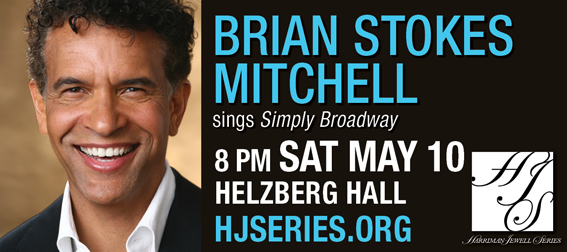BATS IN THE BELFRY: Lyric’s Fledermaus offers fine singing, excellent scenic design, firm direction
By Paul Horsley
Die Fledermaus is a surprisingly difficult opera to bring to the stage, deceptively simple on the surface yet filled with comic subtleties and a sort of effortless graciousness that has to be “just right.” The Lyric Opera of Kansas City’s new English-language production that opened April 26th, directed by Tomer Zvulun in his company debut, features first-rate scenic design and magnificent singing but in the end succeeds only partly in capturing the breathless effervescence of the piece. Audiences will enjoy it nevertheless, because the core of this story is implacably funny and much of the music is familiar and beloved. I did not enjoy myself overly, and I’ve devoted no little angst to figuring out why.
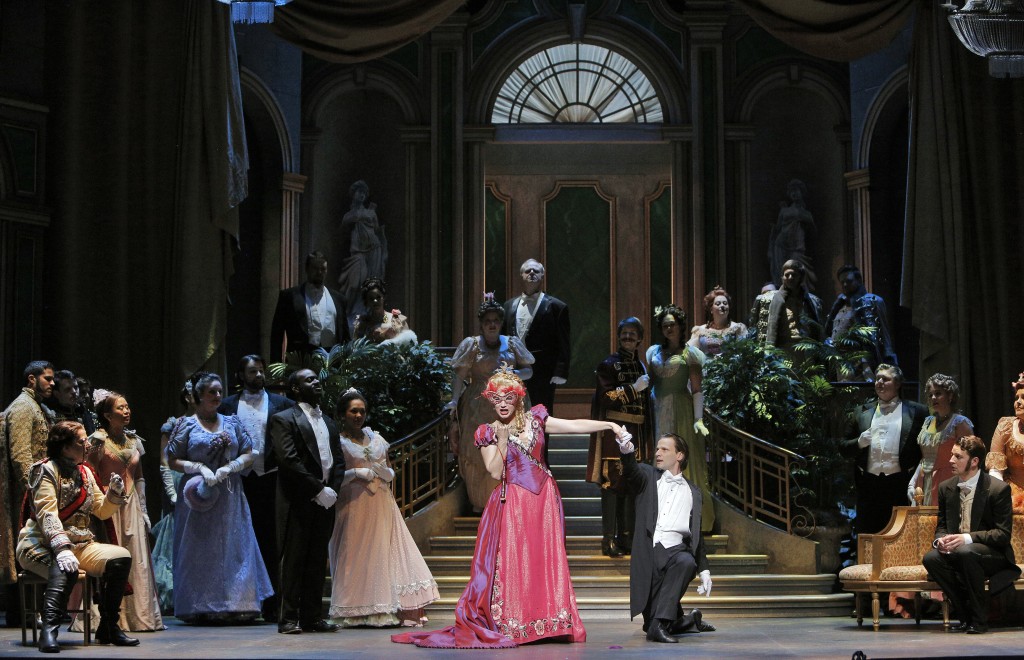
To begin with the positive, the Lyric has brought some wonderful singers into the mix here. Kelly Kaduce lends substantial heft and a gloriously powerful soprano to the role of Rosalinde, the bored bourgeois housewife in Hapsburg Vienna who is being wooed by a dashing tenor. Her whimsical “Klänge der Heimat” czárdás aria in Act II, in which she tries to prove she’s a Hungarian countess, is a vocal and dramatic highlight of the show. Tall, elegant Liam Bonner offers a warm, delicious baritone to the central role of Eisenstein, the would-be philandering husband, whose earlier offense against his friend Dr. Falke has set the whole intrigue into motion. Quite appealing was the sweet, unaffected soprano of Anna Christy, its crystal clarity lending dramatic import to unexpected moments such as her Act III “Spiel’ ich die Unschuld vom Lande” (though her famous laughing-aria “Mein Herr Marquis” was, oddly, drained of much of its lilt through the use of excessive rubato on the “ha ha ha”s).
Especially noteworthy is Paul LaRosa’s rich, honest, natural-sounding baritone: Already in Act I his Falke caught attention for its wry sophistication, his voice and his overall countenance settling into the role immediately. Gordon Gietz sings Alfred, the singing-teacher-turned-provocateur, with a light, delicious lilt, adding comedic touches in the prison scene by singing snippets from other operas that spawn impromptu witticisms. Joyce Castle was masterfully comfortable, as always, in the trouser role of Orlofsky, the bored Russian prince whose party becomes the stage for Falke’s “Revenge of the Bat” plot.
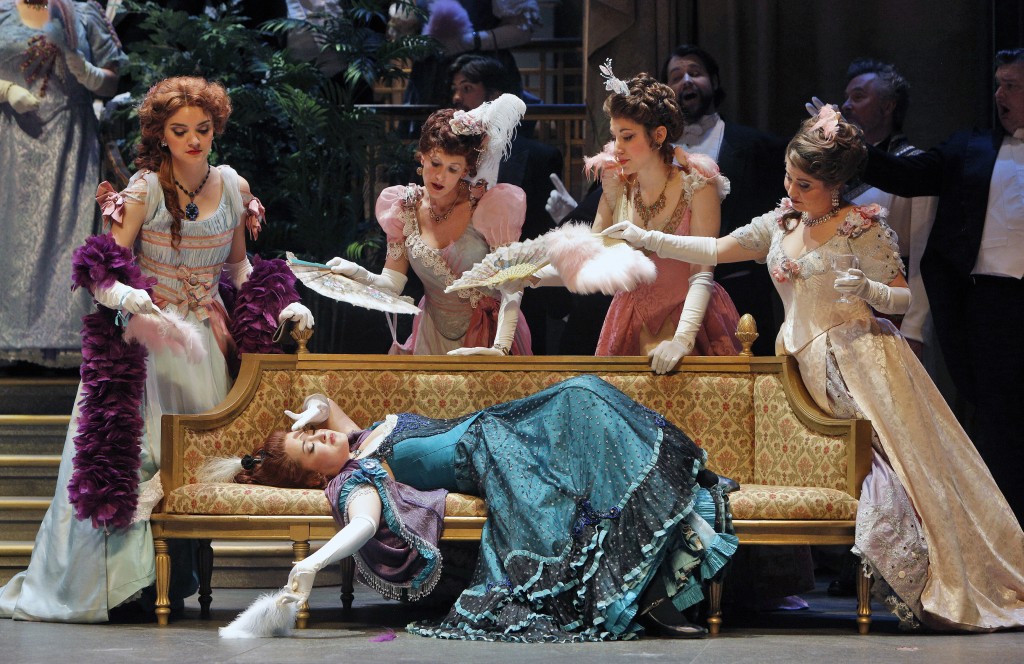
Fledermaus relies on acting skills to an unusual degree, chiefly because it is almost half spoken dialogue (depending on how much text a production decides to use, and how much it adds for comic “local color”). Granted, today’s opera singers are highly trained in acting skills, which they learn alongside diction, movement and fencing. The best of them are indeed professional actors, but many are not. What’s striking is how noticeable the difference is when “real” actors stand next to them onstage: Robert Gibby Brand in the minor role of the servant Ivan rivets the eye just by stepping onstage in Act II, and Gary Neal Johnson as the drunken jailer Frosch pretty much takes over Act III.
This is not to say the others don’t have acting skills. But at times they struggle to make their roles and their movement fully convincing. These are not deep characters, it’s true, but having them do Radio City line-kicks (Eisenstein and Falke in Act I) pretty much robs them of their dignity. Tomer commands the spirit of the piece and has created with his players an effortless, clock-like flow throughout, and he provides funny local references and anti-opera barbs to the dialogue (“to sing Wagner you need a life sentence,” says Frosch when Alfred sings from The Ring) that were not excessive. Yes, at times one felt Tomer chose movement where a bit of stillness might have been welcome, but the results were okay.
R. Keith Brumley’s partly new set design was exceptionally elegant, with a richly turned-out domestic scene for Act I—complete with large, arched windows stage left leading to a leafy, inviting garden. The Act II palace was glitzy enough that you could almost believe it was one of the most lavish residences in the entire Austro-Hungarian Empire, and the Act III prison was an odd but not unattractive scaffold-like structure. My only quibble was that the central entrance staircase of the party scene took up so much room that a great deal of stage action had to take place on the quite narrow remaining space—chorus, dancers, lead singers and Falke’s whole unfolding charade. (I thought we’d licked this too-shallow-stage problem when the company moved out of the Lyric Theatre.) Nevertheless the Kansas City Ballet dancers, in choreography by artistic director Devon Carney, were delightful in their can-can sequence, and the dazzlingly virtuosic Logan Pachciarz pretty much stole whatever scene he was in.
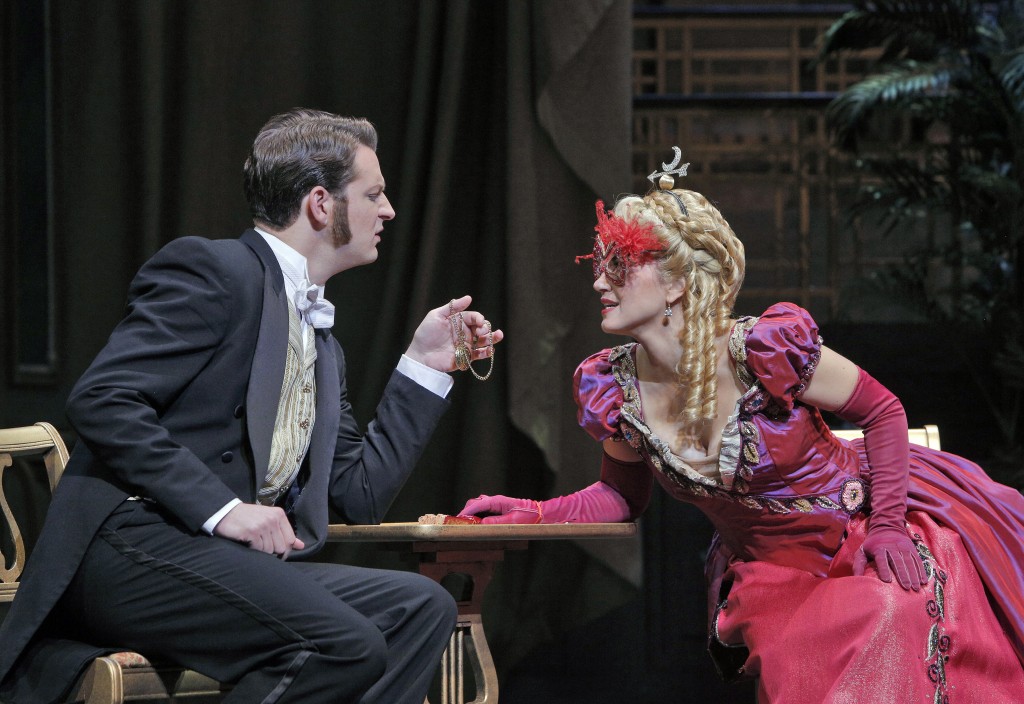
The costumes created by Zack Brown for Washington National Opera were convincing in their colorful and at times over-the-top elegance, and Marie Barrett’s lighting design showed considerable imagination. The chorus sang with vigor and warmth. The Kansas City Symphony in the pit, under music director Ward Holmquist’s direction, performed capably and with a general sense of engagement, though the infectious dances sometimes stopped short of being utterly irresistible. Not all of Fledermaus is top-drawer Strauss, frankly, and I might have tried to zip through some of it more quickly. But Ward has a deeply sympathetic rapport with singers and this was notable throughout.
Die Fledermaus runs through May 4th at the Kauffman Center. Call 816-471-7344 or see kcopera.org.
[slider_pro id=”2″]
[slider_pro id=”3″]
Features
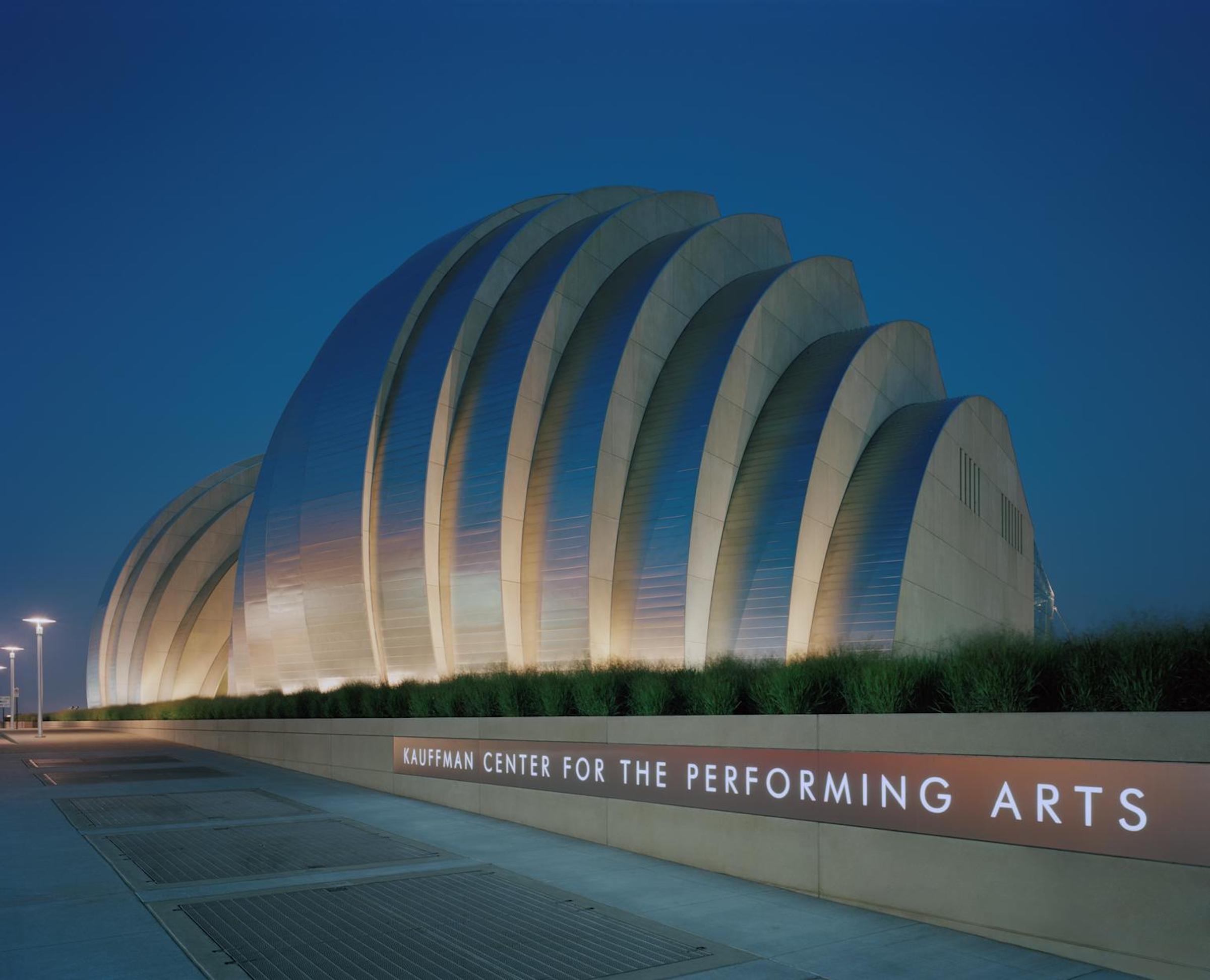
It’s difficult to remember what the Kansas City skyline looked like 20 years ago, before the Kauffman Center for the Performing Arts began to take shape at 16th and Broadway.…

You don’t have to watch an Allegro Choirs of Kansas City rehearsal for very long before you start to understand why these youngsters sound so good. The founding director, Christy…

Tristian Griffin’s success grows partly from his openness to the wide world of arts. The Kansas City-based dancer-choreographer, who established his own company in 2019 (Tristian Griffin Dance Company), didn’t…


